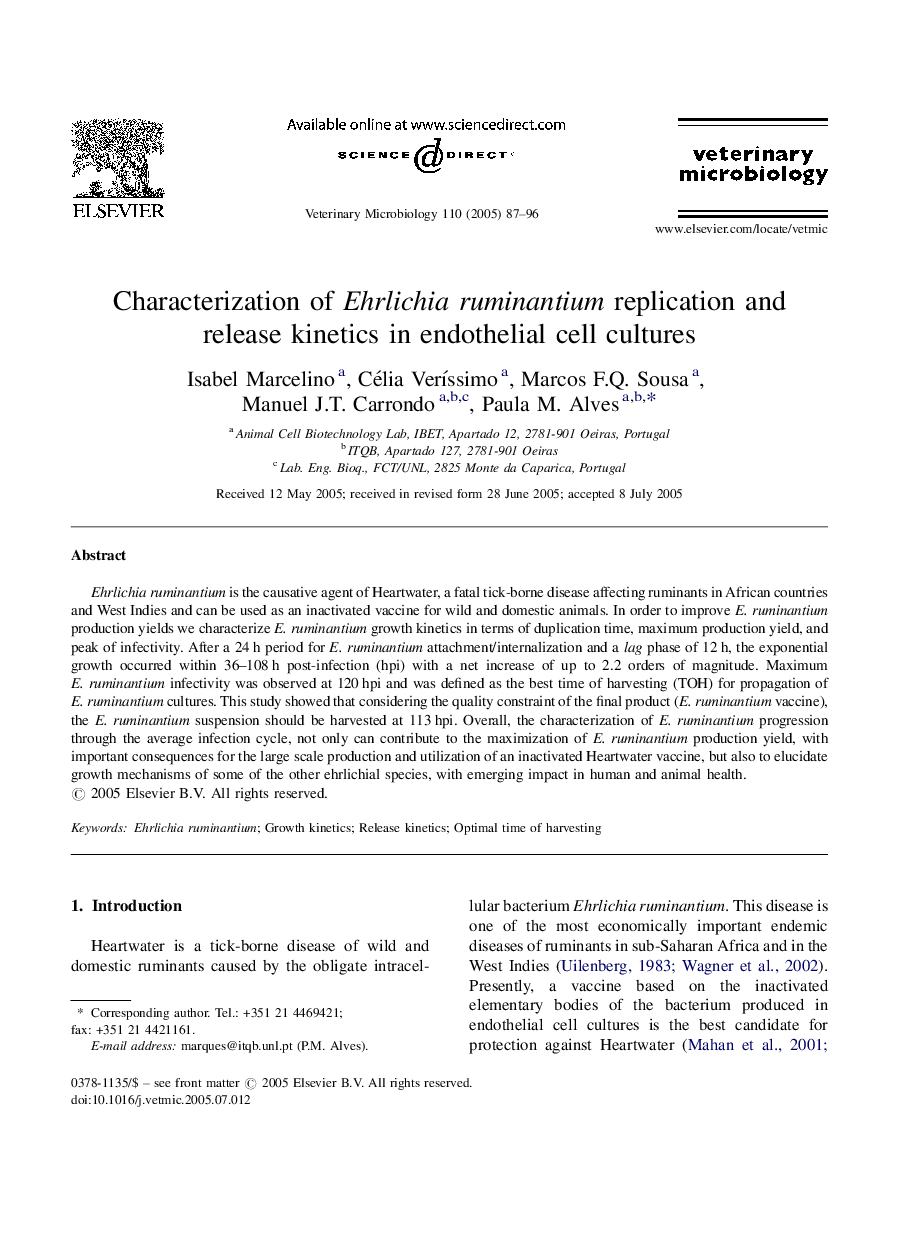| Article ID | Journal | Published Year | Pages | File Type |
|---|---|---|---|---|
| 8989464 | Veterinary Microbiology | 2005 | 10 Pages |
Abstract
Ehrlichia ruminantium is the causative agent of Heartwater, a fatal tick-borne disease affecting ruminants in African countries and West Indies and can be used as an inactivated vaccine for wild and domestic animals. In order to improve E. ruminantium production yields we characterize E. ruminantium growth kinetics in terms of duplication time, maximum production yield, and peak of infectivity. After a 24Â h period for E. ruminantium attachment/internalization and a lag phase of 12Â h, the exponential growth occurred within 36-108Â h post-infection (hpi) with a net increase of up to 2.2 orders of magnitude. Maximum E. ruminantium infectivity was observed at 120Â hpi and was defined as the best time of harvesting (TOH) for propagation of E. ruminantium cultures. This study showed that considering the quality constraint of the final product (E. ruminantium vaccine), the E. ruminantium suspension should be harvested at 113Â hpi. Overall, the characterization of E. ruminantium progression through the average infection cycle, not only can contribute to the maximization of E. ruminantium production yield, with important consequences for the large scale production and utilization of an inactivated Heartwater vaccine, but also to elucidate growth mechanisms of some of the other ehrlichial species, with emerging impact in human and animal health.
Related Topics
Life Sciences
Agricultural and Biological Sciences
Animal Science and Zoology
Authors
Isabel Marcelino, Célia VerÃssimo, Marcos F.Q. Sousa, Manuel J.T. Carrondo, Paula M. Alves,
